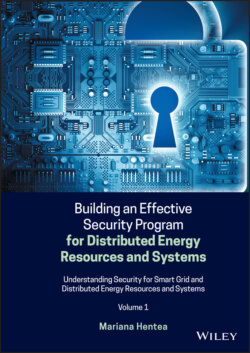Читать книгу Building an Effective Security Program for Distributed Energy Resources and Systems - Mariana Hentea - Страница 51
1.7.4 Advanced Meter Systems
ОглавлениеThe AMI enable measurement of detailed, time‐based information and frequent collection and transmittal of such information to various parties. Advanced metering systems are composed of hardware, software, communications, consumer energy displays and controllers, and applications (such as customer‐associated systems, meter data management, and supplier business systems).
AMI typically refers to the full measurement and collection system that includes meters at the customer site; communication networks between the customer and a service provider, such as an electric, gas, or water utility; and data reception and management systems that make the information available to the service provider [EPRI 2007], [UCAIUG 2008].
Smart Grid is defined as system of systems, implying also a network of information networks. Although some characteristics are similar to IT systems, AMI systems have characteristics that differ from traditional information systems. Many of these differences stem from the fact that AMI systems are integrated into the physical power grid. In some cases, adversely impacting an AMI system can pose significant risk to the health and safety of human lives and serious damage to the environment, as well as serious financial issues such as production losses.
Unlike automatic meter reading, AMI enables two‐way communications with the meter. Smart meters enable two‐way communication between the meter and the central system. A smart meter is an electronic device that records consumption of electric energy, natural gas, or water in intervals of an hour or less and communicates that information at least daily back to the utility for monitoring and billing purposes. Each meter must be able to reliably and securely communicate the information collected to some central location.
In addition to communication with the headend network, smart meters may need to be part of a home area network, which can include a customer display and a hub to interface one or more meters with the headend. Technologies for this network vary from country to country. Many security concerns center on the inherent hacking weakness of wireless technology, combined with the remotely controllable software incorporated into smart meters.
Security of the devices and information and other issues associated with meter data transmission from the customer meters to the AMI host system need to be addressed to ensure that only authorized devices provide and receive meter data.
